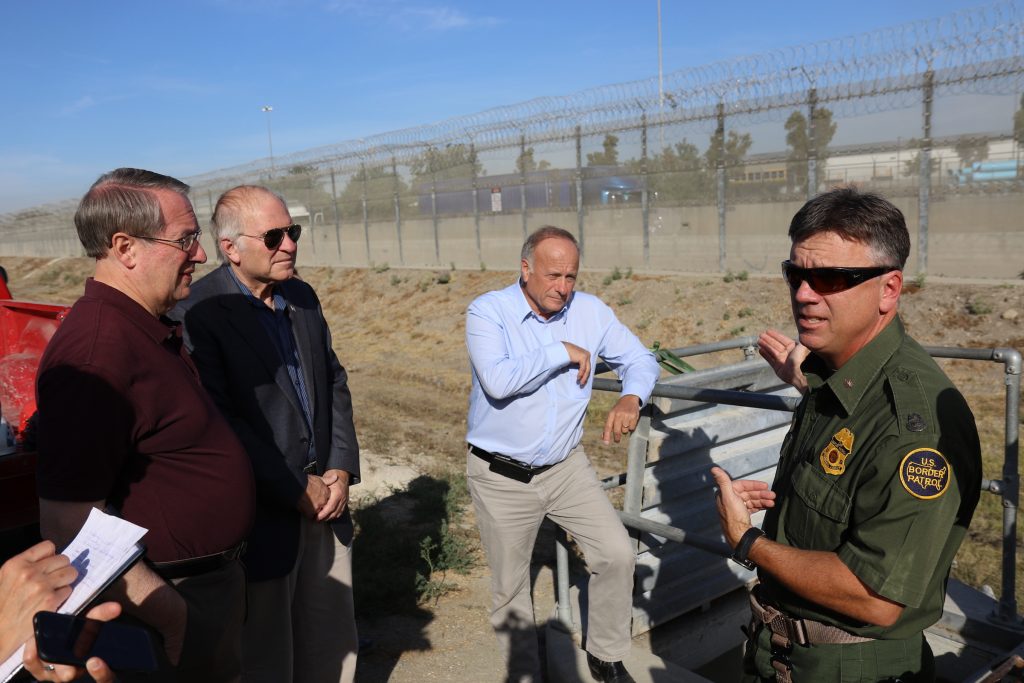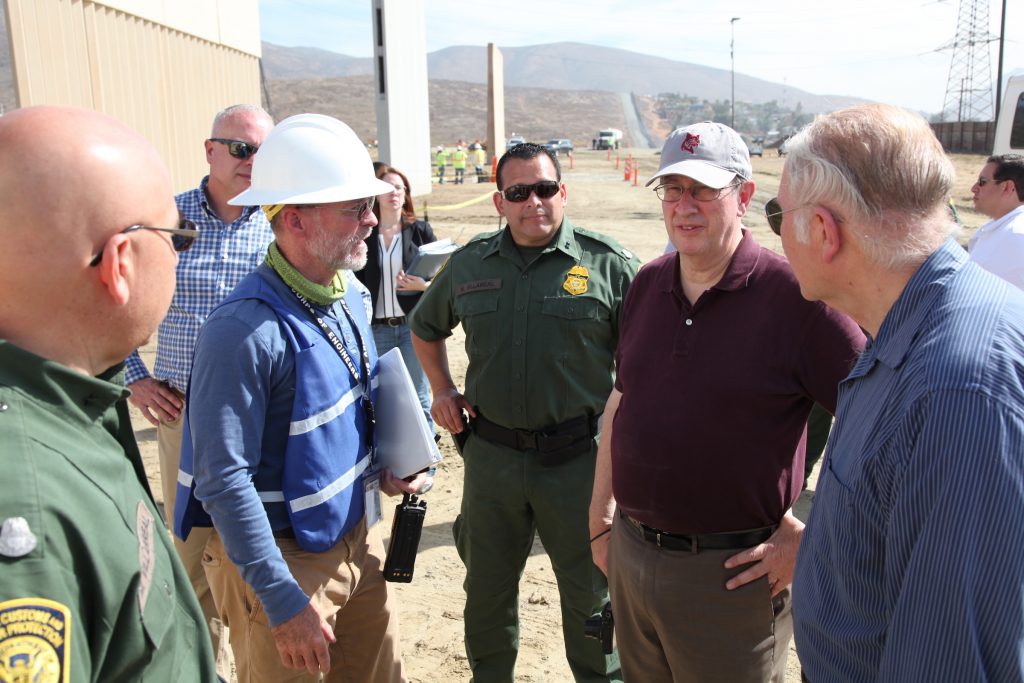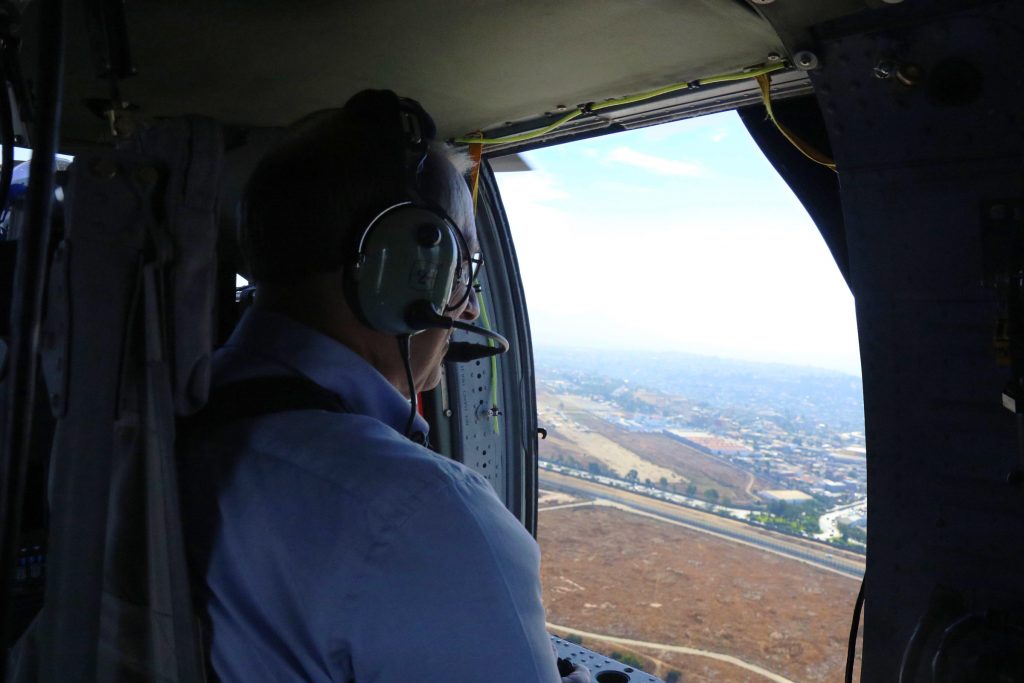Six Pictures from the House Judiciary Committee's Visit to the U.S.-Mexico Border
October 19, 2017
San Diego, California – Members of the House Judiciary Committee traveled to the San Diego Sector of the U.S.-Mexico border this week to seek information about security along the U.S.-Mexico border, enforcement of our nation’s immigration laws, and the application of asylum laws. Members who traveled to San Diego include House Judiciary Committee Chairman Bob Goodlatte (R-Va.) and Representatives Steve Chabot (R-Ohio) and Steve King (R-Iowa).
Chairman Goodlatte made the following statement on the delegation’s visit to the San Diego Sector:
“Following a very successful trip to the Rio Grande Valley, Members of the House Judiciary Committee traveled to the San Diego area. Traveling to two very different sectors of the U.S.-Mexico border provided an excellent opportunity to see firsthand the successes and challenges that federal officials face at these diverse locations. “While the methods used by unlawful immigrants to gain entry into our country vary greatly between the different sectors of our country, one thing is the same. Years of lax enforcement policies have wreaked havoc on our borders. Millions of people have been allowed to come into the U.S. and flout our immigration laws.“The Trump Administration’s efforts to curb illegal immigration by enforcing our immigration laws have been met with success but as we heard from immigration officials on the ground at the border, there are still loopholes in the law that are being exploited to gain entry into the U.S. The House Judiciary Committee will continue working to close these dangerous loopholes in order to maintain the integrity of the U.S. immigration system.”
Below are six pictures from the San Diego visit.
The Members of Congress began their visit to the San Diego sector with a tour and briefing on the Border Infrastructure System (BIS), which is a fourteen mile stretch of double fencing that separates San Diego, California from Tijuana, Mexico. Members were briefed on the Border Patrol’s use of cameras and stadium style lighting along the fence line. The Members also saw the all-weather roads that the Border Patrol has constructed in this area to increase their mobility in the difficult terrain.







Chairman Goodlatte and Representatives Chabot and King join Border Patrol agents in a tour of the Border Infrastructure System in the San Diego Sector
Border Patrol officers took the delegation to one of many tunnels they have discovered leading from Mexico into the United States. Unlawful immigrants use these tunnels to smuggle drugs and humans into the U.S. This particular tunnel, the Galvez tunnel, starts in a warehouse in Mexico and extends toward a warehouse in the U.S. Tunneling under the border is a particularly popular method of illegal entry in this area of the U.S.-Mexico border.

Chairman Goodlatte and Representatives Chabot and King are briefed by Border Patrol agents on the use of tunnels to gain illegal entry into the U.S.
The delegation viewed the six completed prototypes for the proposed new border wall. Construction of two additional prototypes will be completed by October 26, 2017. Following the completion of the construction phase, U.S. Customs and Border Protection (CBP) will begin a testing phase to identify the most effective design. The prototypes are all 30 feet high, which is nearly twice the height of the current secondary border fence in the San Diego area.

Chairman Goodlatte and Representative Chabot are briefed by the Army Corps of Engineers on the border wall prototypes
Members toured the Otay Mesa Detention Center where they were briefed by the Department of Justice’s Executive Office for Immigration Review on immigration court procedures, the caseload for immigration judges, and the backlog of cases. The Chief Counsel from Immigration and Customs Enforcement-San Diego spoke to the delegation on prosecuting cases in immigration court. The Members were also briefed on processing and management of detained aliens by Immigration and Customs Enforcement’s Enforcement and Removal Operations (ICE ERO) and they were briefed on procedures for unlawful immigrants claiming credible fear in order to seek asylum in the U.S. from U.S. Citizenship and Immigration Services (USCIS).
The Members of Congress toured the San Ysidro Port of Entry, which is the largest port of entry in the world. On average 137,000 individuals cross the border from Mexico to the U.S. every day at San Ysidro. This includes a daily average of 36,000 pedestrians, 64,000 vehicles and 250 buses coming across the border. The Members were briefed by CBP on vehicle arrivals and inspection, pedestrian inspection procedures, seizure processing, and the specialized technology CBP uses to conduct inspections.

Chairman Goodlatte and Representative King are briefed by Sidney Aki, CBP’s Port Director at the San Ysidro Port of Entry
While at the San Ysidro Port of Entry, the Members received a K-9 demonstration. CBP’s K-9 unit is an important tool in the fight against illegal drugs coming across the border. Between seven and seventeen loads of illegal drugs are seized every day at the San Ysidro Port of Entry.

CBP’s K-9 unit is key in our fight against illegal drug smuggling
The Members of Congress received an aerial tour of the U.S.-Mexico border and the coastline by the U.S. Customs and Border Protection’s Air & Marine Operations. Members were shown Torrey Pines State Beach, which is a frequent landing spot for immigrants seeking illegal entry into the U.S. by boat.

Chairman Goodlatte examines the U.S.-Mexico border with CBP’s Air & Marine Operations
In addition to the San Diego Sector, the delegation traveled to the Rio Grande Valley Sector in Texas.
###